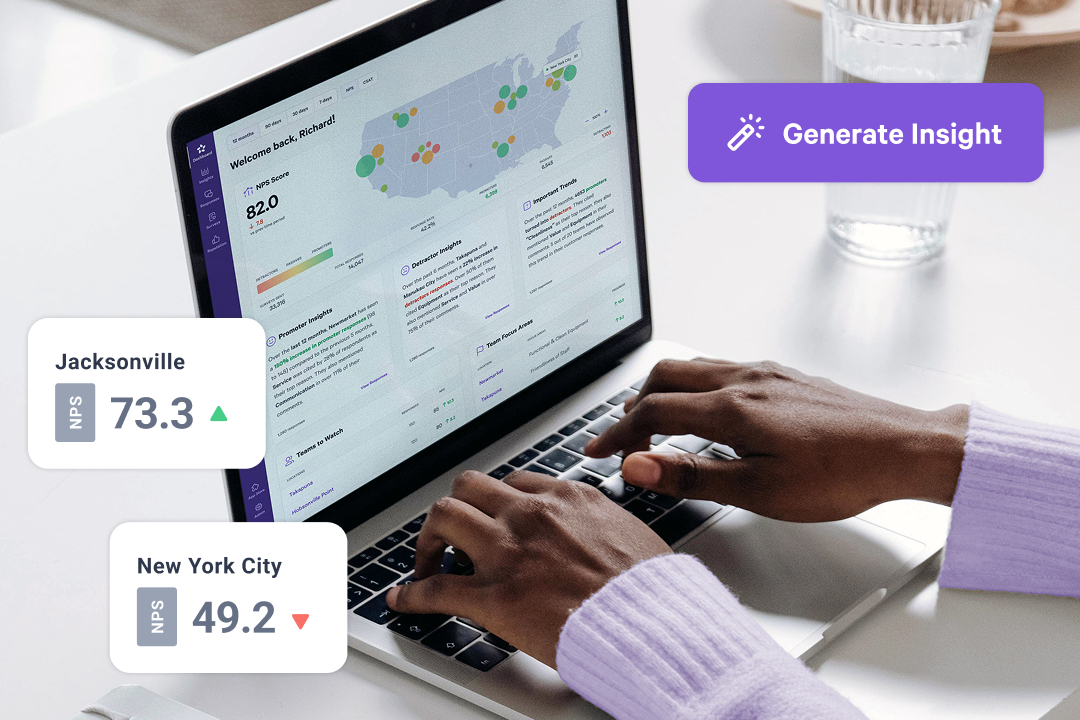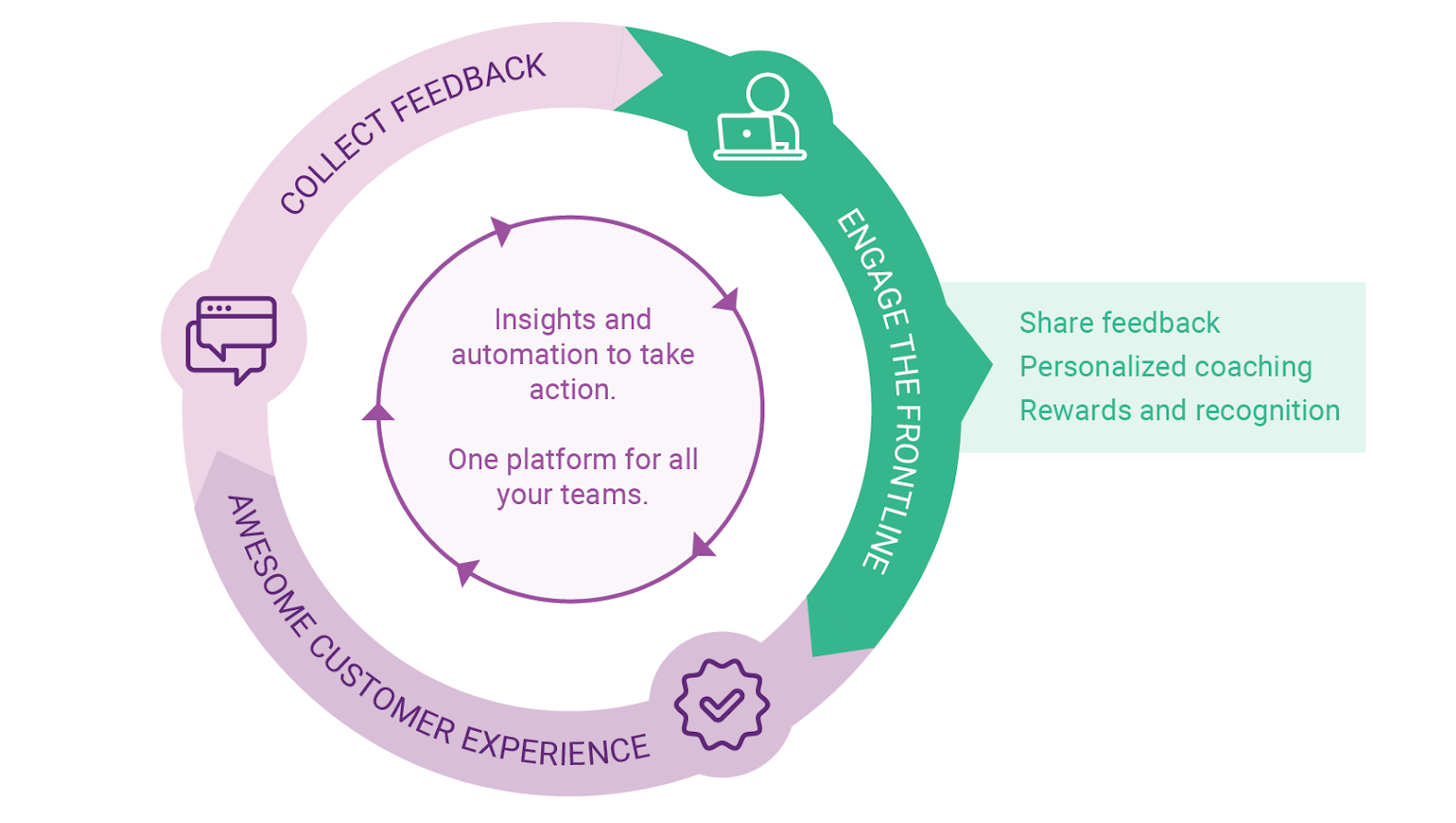
“It doesn’t matter to your customers if they’re at your first location or your 500th, they expect the same great experience every time.” – Yesenia Hamilton, Senior Customer Success Manager
For growing businesses, that expectation presents a serious challenge. As you scale across cities, regions, or even countries, maintaining a consistent customer experience (CX) becomes increasingly difficult. Each location may have different staff, leadership, infrastructure, and local quirks, but your brand promise needs to show up the same way, every time.
The stakes are high. Inconsistent CX can erode trust, damage your reputation, and send loyal customers straight to competitors. Yet the traditional top-down approach often backfires. The stricter policies and centralized control that don’t take the customer experience into account stifle the very people who have the most impact on CX: your frontline teams.
At AskNicely, we’ve helped hundreds of multi-location businesses, from healthcare and automotive groups to franchise networks and service providers, build consistency without sacrificing flexibility. The key? Shift from controlling customer experience to coaching it.
Let’s explore why consistency matters, where companies go wrong, and how you can equip every location and frontline team to deliver standout experiences for every customer every time.
Consistency isn’t just about brand polish, it’s about trust. When customers know they can count on the same quality of service no matter which location they visit, they’re more likely to return, refer, and remain loyal over time.
And the data backs it up. McKinsey research shows that companies improving customer satisfaction through cohesive, coordinated experiences (especially across digital and physical channels) can boost satisfaction by 15 to 20% and achieve revenue growth of 10 to 15% within just a few years of implementation. Plus, firms that embed customer experience at the heart of their operations often realize up to twice the revenue growth of less customer-centric peers.
But it’s more than operational efficiency or marketing alignment. Consistent experiences communicate that your business is reliable, intentional, and committed to excellence, even in the moments that seem small and across zip codes. That trust builds over time, touchpoint by touchpoint, across every branch, region, and team.
At scale, consistency isn’t accidental; it’s engineered. And it starts with understanding the most common reasons companies fail to deliver it.
For businesses with multiple locations, delivering a consistent customer experience can feel like playing a game of telephone. The vision starts clear at headquarters, but by the time it reaches the frontline, it’s been diluted, misinterpreted, or deprioritized. Here are some of the most common missteps that undermine consistency:
Corporate teams often design one-size-fits-all experiences that don’t translate well to individual branches. While centralization helps with brand consistency, it can alienate frontline staff who know their customers and local context best. The result? Teams disengage, and the experience falls flat.
Many businesses overlook their most important CX asset: the people who interact with customers every day. Without training, recognition, and real-time feedback, even the most well-intentioned teams struggle to meet expectations, let alone exceed them.
If you’re not measuring the same metrics across all locations — or worse, not measuring at all — you can’t compare performance or identify where things are slipping. This lack of visibility makes it nearly impossible to course-correct.
Collecting customer feedback is one thing. Using it to drive location-specific improvements is another. Many businesses gather data but leave it stuck at the corporate level, with no clear path for branches or teams to learn from it.
Every community is different. What works in Auckland might not resonate in Portland. Ignoring local expectations in pursuit of brand uniformity can lead to tone-deaf interactions and missed opportunities to genuinely connect with customers.
When these issues go unaddressed, consistency suffers, and so does customer trust. The good news? A better path exists. Let’s explore the principles behind building consistency that scales.
Delivering a consistent customer experience across multiple locations doesn’t mean turning every branch into a carbon copy. It means creating a repeatable standard of excellence, a shared expectation of how customers should feel, while allowing for local flexibility. To achieve that, businesses need to rethink the way they approach consistency.
Here are five key principles to guide your CX strategy at scale:
True consistency comes from frontline ownership, not corporate enforcement. Instead of rigid scripts and top-down mandates, give your teams clear CX goals and the autonomy to achieve them in their own way. Equip them with tools to understand how they’re performing, and let them lead the experience.
Debit Success, one of the largest full-service direct debit management services in Australia and New Zealand, used this very approach to coach their lowest performers to match their best.
Frontline staff in offices worldwide were delivering varying levels of service, which subsequently resulted in equally varying levels of customer satisfaction. Without consistently delivering awesome customer experiences, Debit Success was losing out on repeat business, referrals, and ultimately revenue growth.
They needed a way to coach, support, and provide real-time customer feedback to their frontline staff to reach a consistent level of service, delivering on the things that mattered to the Debit Success customers. And most importantly, it needed to be done in a way that gave autonomy and a genuine sense of ownership to customer-facing teams.
Learn exactly how they did it here.
When it comes to delivering great customer experiences at scale, consistency is key, but that doesn’t mean every interaction has to follow the same script. Instead of enforcing rigid procedures, focus on defining a consistent outcome. For example, the desired result might be: “Customers feel heard, understood, and valued after every interaction” or customers report an NPS of 9 or higher.
By aligning teams around a shared outcome rather than a fixed process, you empower frontline employees to use their own judgment, creativity, and local knowledge to achieve that goal in a way that feels authentic.
This flexibility fosters ownership and engagement, enabling teams to personalize the customer experience without compromising the brand promise. It also encourages innovation and continuous improvement, as employees can experiment with what works best in their unique context, as long as the result remains the same.
Ultimately, standardizing the impact rather than the method allows you to scale customer experience while keeping it human, local, and effective.
To improve customer experience, you need to measure it, and do so in a way that’s consistent across every location, team, and touchpoint. That means aligning your organization around a common set of core CX metrics, such as net promoter score (NPS), customer satisfaction score (CSAT), and average response or resolution time. These universal metrics provide a shared language for understanding performance and customer sentiment across the business.
However, consistency doesn’t mean a lack of nuance. The most effective organizations go a level deeper by segmenting results by team, shift, region, or even individual employee. This ability to drill down transforms raw data into actionable insight. For example, if one location consistently underperforms on NPS, but has great CSAT scores, that might indicate short-term satisfaction but weak long-term loyalty, a key signal for leadership to investigate further.
Consistent measurement creates clarity. It helps leaders identify trends, spot outliers, and pinpoint exactly where to step in with coaching, resources, or recognition. It also ensures that everyone (from the front desk to the boardroom) is working from the same playbook and aligned on what success looks like.
You can get started on consistent CX measurement with our free templates below:
Free Net Promoter Score (NPS) survey template
Free Customer Satisfaction Score (CSAT) survey template
If you want teams to consistently deliver exceptional customer experiences, you have to celebrate it when they do. Recognition is one of the most powerful (and often underused) tools for driving behavior change. When employees see that great customer experience is noticed, valued, and rewarded, they’re far more likely to make it a daily priority.
Start by making CX wins visible. Public recognition, whether it’s a shoutout in a team meeting, a spotlight on the company intranet, or a leaderboard showcasing top-performing locations, turns abstract metrics into real, motivating stories. It creates healthy competition, pride in work, and a sense of purpose that transcends daily tasks. If you use AskNicely, we’ve built in an easy way to shout out your team members who are doing a stellar job with our Shoutouts feature.
Incentives don’t have to be expensive or complex. A handwritten note from a manager, a small bonus, or a team lunch can go a long way in reinforcing the right behaviors. The key is to tie rewards directly to the outcome, for example, high NPS scores, glowing customer comments, or notable improvements over time. This way, teams understand what success looks like.
Importantly, recognition should happen locally and often. Don’t wait for the quarterly review. When frontline staff are acknowledged in real-time for going above and beyond, it builds a CX-first culture that’s embedded in the everyday rhythm of work.
Feedback is only useful if it leads to action. Empower each location to act on its own feedback, whether that means following up with a detractor, coaching a team member, or tweaking a local process. Speed matters here. The faster the loop is closed, the more powerful the impact on loyalty and trust.
With the right principles in place, consistency stops being a corporate ideal and starts becoming a local reality.
Next, let’s explore the role of technology in making this scalable and sustainable.

Achieving consistent customer experience across multiple locations isn’t just a leadership or cultural challenge; it’s a systems challenge. Without the right technology in place, even the best strategies can’t scale. You need tools that make CX visible, measurable, and actionable at every level of your organization.
Here’s how the right technology enables consistency:
A single, centralized CX platform ensures every location is collecting feedback the same way, with the same standards. This enables apples-to-apples comparisons and reveals performance gaps, whether it’s one underperforming store or a region-wide trend.
It’s not enough for the head office to see the data. Frontline teams need real-time visibility into how they’re doing, so they can take ownership, adjust their behavior, and celebrate wins in the moment.
Technology should do more than collect feedback, it should help teams act on it. That means routing feedback to the right person, alerting managers when scores drop, and automating follow-ups with customers who leave low ratings.
💡Manually sifting through all of your customer feedback is a non-starter. NiceAI's feedback summaries take the hassle out of this process by condensing feedback into concise, actionable insights. These summaries highlight key trends and patterns, empowering your team to make quick, data-driven decisions and stay ahead of customer expectations..
The best tech doesn’t just flag issues, it reinforces good behavior. Leaderboards, badges, coaching prompts, and trend analysis help you standardize excellence across all your branches and motivate continuous improvement.
Technology, when designed for the frontline, becomes your consistency engine. It allows corporations to guide the strategy while empowering local teams to execute it brilliantly.
Maintaining a consistent customer experience across multiple locations isn’t about enforcing compliance, it’s about enabling excellence. When your frontline teams feel empowered, recognized, and connected to the outcomes they drive, consistency becomes a natural byproduct of great culture and clear systems.
Start by defining what “great experience” looks like at your company, not just in theory, but in real-world behaviors. Then give your teams the tools to deliver it every day, backed by real-time feedback, local accountability, and tech that makes action easy.
At AskNicely, we help multi-location businesses turn CX into a competitive advantage, not by tightening control, but by elevating the people who matter most: your frontline teams.
Let us show you how the world’s top multi-location brands are using AskNicely to improve CX, location by location, frontline by frontline.
Book a free strategy call or download your Ultimate guide to net promoter score to start your journey.